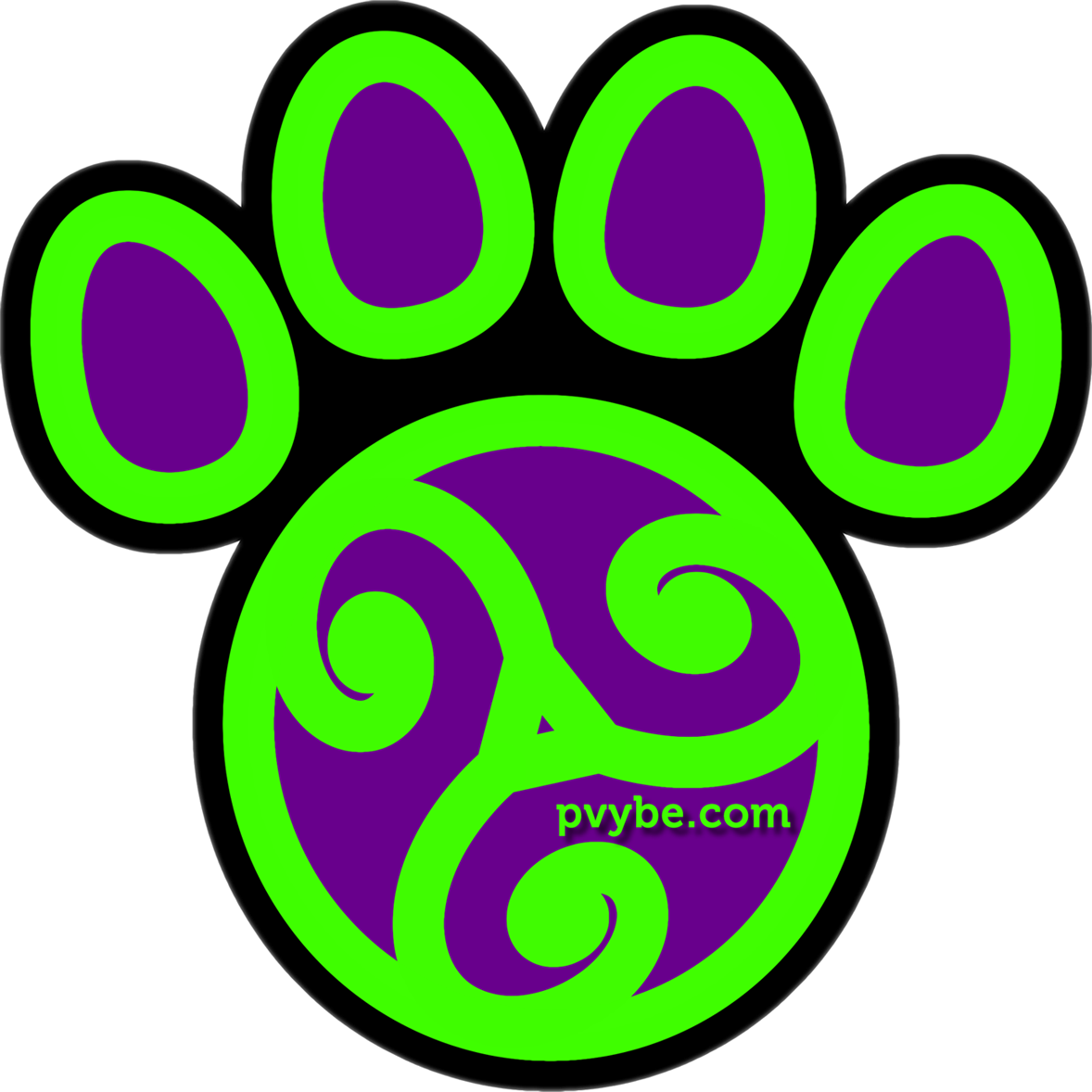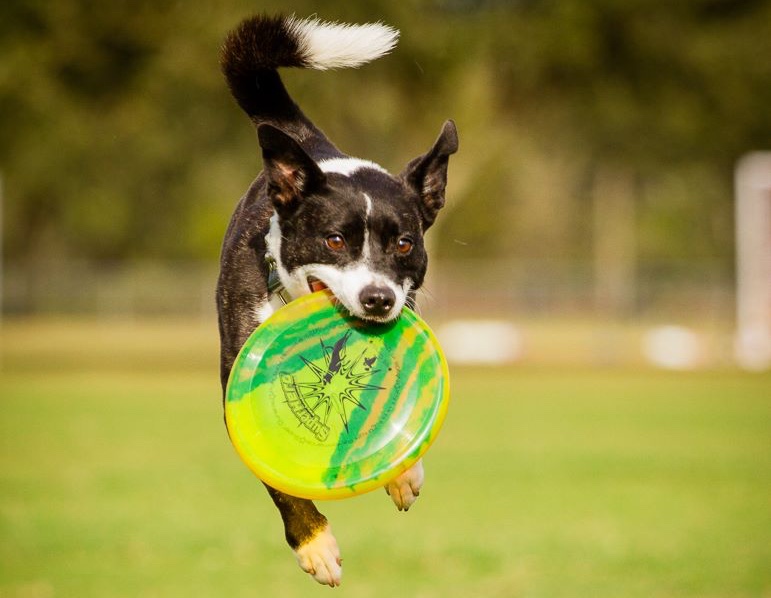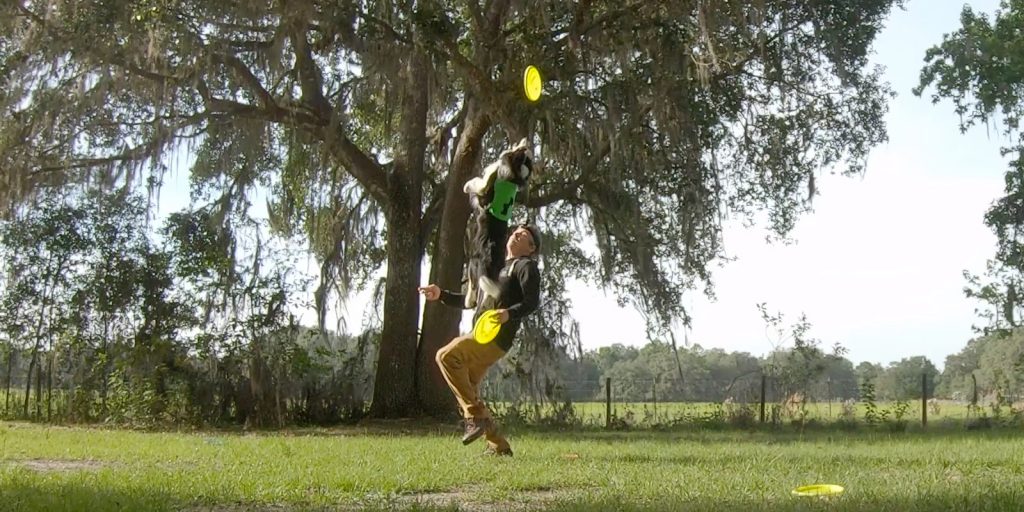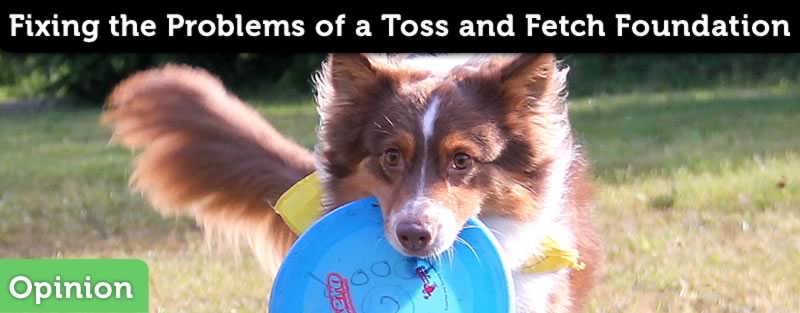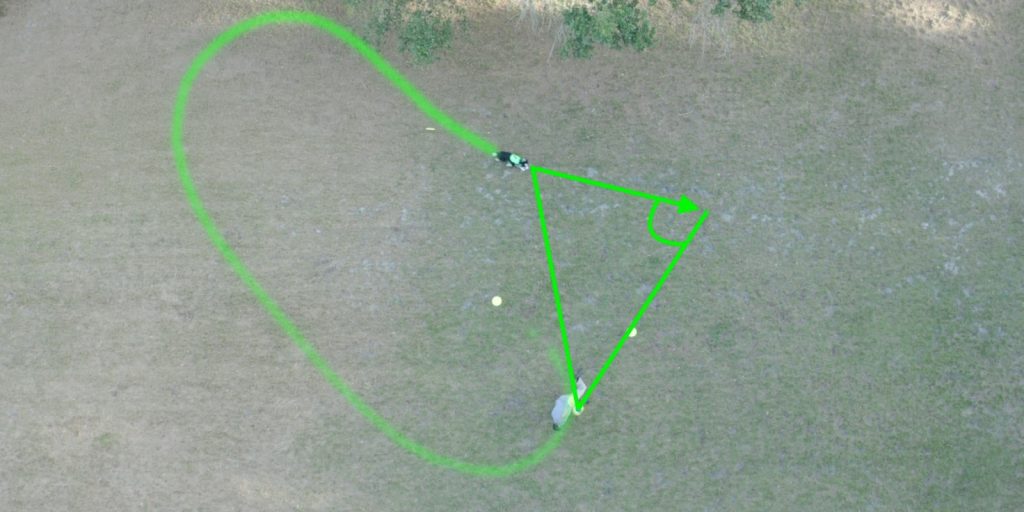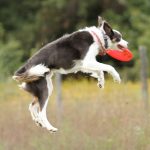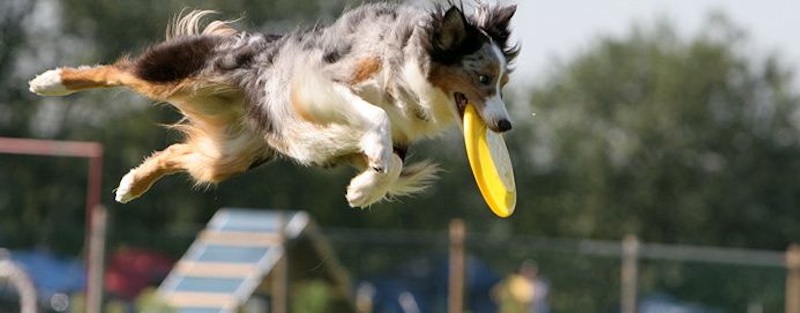
Judging Difficulty and Canine SubElements
I am writing this opinion piece as myself, a dog trainer and disc dog competitor and my comments do not, in any way, represent the USDDN or the USDDN Steering Committee.
I got a couple of questions about USDDN judging sent to me via a Facebook message from Mila, who lives in Moscow, Russia. Mila handles judging for the Disc Hunters, a Russian Disc Dog Club. It’s a two part-er so I’ll take it in chunks…
Hi! RON! would you please help us with the following questions:
a) scoring at some sub-elements of Canine Elements, for example Prey Drive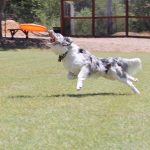 Prey Drive is the desire to chase and catch moving targets. In nature these targets are live prey: rabbits, squirrels, cats, and birds. In dog sports the targets are most often tug toys,... More and Grip should be done taking in to account difficulty of the routine?
Prey Drive is the desire to chase and catch moving targets. In nature these targets are live prey: rabbits, squirrels, cats, and birds. In dog sports the targets are most often tug toys,... More and Grip should be done taking in to account difficulty of the routine?
as the USDDN Judging Handbook reads at “Scoring Examples”:
….
If the player attempts and made any sub-element with good success and difficulty they will usually receive 1.9-2.2
….
so we wish to precise how difficulty influences scoring for Prey DriveDrive is focus and energy applied towards work. There are many kinds of Drive: social drive, tracking drive, prey drive, bite/kill, stalking, and food to name a few. Social drive, prey drive, and... More and Grip sub-elements?
The Short answer is that that it doesn’t.
Independent Elements
The USDDN separates each Element: Canine, Player, Team and Execution. Each one is supposed to be judged independently. That’s the way the contest is designed. The scores a team gets in the Player and Team Elements are seriously impacted by difficulty, but the Canine element, not so much.
The job of the Dog judge is to observe the dog and score the dog on what the dog does on the field. The type of throw the player makes, or the type of vault done should have very little, if any, impact on the Dog’s score. What the Dog judge is looking at is the athletic scale, the smoothness, and the style of the dog, how the dog handles a disc in their mouth and the ability of the dog to perform the retrieve.
Grip
Grip is not impacted whatsoever by the difficulty of the routine. It’s just a function of having a good handle on the disc. Now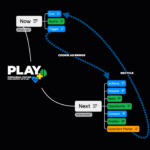 The Now Phase is an integral part of the Play Cycle in the Play+ training philosophy. It embodies the current, immediate interaction between the handler and the dog, anchoring them in the present... More, personally, I don’t care whether or not the dog has a firm grip on the disc or not – In all honesty, I think it’s a silly element to be judging – what I would be looking for is that the dog does a good job of handling the disc. The dog is not taco-ing, killing or shredding the disc, or errantly dropping it on the retrieve. I could care less if the dog is dangling the disc from a tooth. As long as they are on task and do not drop the disc because of that loose grip, I’m cool with that.
The Now Phase is an integral part of the Play Cycle in the Play+ training philosophy. It embodies the current, immediate interaction between the handler and the dog, anchoring them in the present... More, personally, I don’t care whether or not the dog has a firm grip on the disc or not – In all honesty, I think it’s a silly element to be judging – what I would be looking for is that the dog does a good job of handling the disc. The dog is not taco-ing, killing or shredding the disc, or errantly dropping it on the retrieve. I could care less if the dog is dangling the disc from a tooth. As long as they are on task and do not drop the disc because of that loose grip, I’m cool with that.
Funny enough, the real issue around Grip tends to be focused on too much, or too excited a grip on the disc, and not too much, so you could see a dog that just crushes discs getting a bad grip score if it overwhelms them and detracts from the flow and presentation of the routine.
It’s a safety issue as well, in that nobody wants to see a handler get bit or a dog get their face cut off by a shredded and damaged disc.
Now, not all judges are going to see it this way, but that’s my interpretation of the Grip rule.
Personally I’d like to see Grip and Retrieve rolled into a Canine Disc ManagementDisc Management is a disc dog term that describes management and organization of discs throughout the routine. Disc Management is a scored category in most disc dog freestyle organizations and has great impact... More subelement that would give judges more freedom in making these kinds of judgement calls.
Prey Drive
Prey Drive, like Grip, is judged independently of the routine difficulty. What you are looking for with Prey Drive is focus on the task at hand and efficient and determined action towards the game. Like Grip, this is a Goldilocks situation. Too little drive – dog disengaging or not being really interested in the disc will result in a lower score. Too much drive – dog is overwhelmed by the disc and is unable to perform the set up skills and tricks that happen between the discs being caught, and the dog will earn a lower score.
Drive ≠ Arousal
Something that is super important to keep in mind regarding Drive is that Drive does not equal Arousal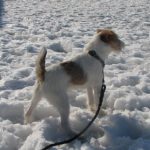 Arousal is a general excited state of being that is often mistaken for Drive. Door jumping, wining, pacing, hyper-vigilance, barking, biting and nipping, and a host of other high energy behaviors can be... More. So many handlers and judges conflate these two concepts. Drive is action and energy and focus applied to work. Arousal is just action and energy with a lack of focus towards work. So a dog who sits patiently and waits for their opportunity to get a disc, and engages quickly and directly on the task at hand, be it a set up move
Arousal is a general excited state of being that is often mistaken for Drive. Door jumping, wining, pacing, hyper-vigilance, barking, biting and nipping, and a host of other high energy behaviors can be... More. So many handlers and judges conflate these two concepts. Drive is action and energy and focus applied to work. Arousal is just action and energy with a lack of focus towards work. So a dog who sits patiently and waits for their opportunity to get a disc, and engages quickly and directly on the task at hand, be it a set up move Set Up Moves are tricks that are used to establish timing and position in disc dog freestyle. Traditional tricks include: Around, Through, Backwards Through, and Scoot, but any or all of your tricks,... More or chasing a disc, has better Drive than a dog that is flying around jumping, biting, and barking and is frequently out of position to work. Also over aroused dogs that pressure their handlers so much that it detracts from the routine – no matter how high they are jumping, or how excited they are about the game, are not displaying Drive. They are displaying arousal. Drive is action, energy and focus applied towards work.
Set Up Moves are tricks that are used to establish timing and position in disc dog freestyle. Traditional tricks include: Around, Through, Backwards Through, and Scoot, but any or all of your tricks,... More or chasing a disc, has better Drive than a dog that is flying around jumping, biting, and barking and is frequently out of position to work. Also over aroused dogs that pressure their handlers so much that it detracts from the routine – no matter how high they are jumping, or how excited they are about the game, are not displaying Drive. They are displaying arousal. Drive is action, energy and focus applied towards work.
b) and the relating question – what the “difficulty” of the routine means?
how we can estimate whether the routine is difficult, very difficult or not difficult at all?
is there difficulty of tricks should be taken into account or/and difficulty of tricks bunches or/and anything else to be considerated while judging?
thank you a lt in advance for your great help!!
with truly best regards, Mila
This is a really good question, Mila! I’m sure you could ask 100 players and get 100 totally different answers here.
What is Difficult?
Estimating the difficulty of the routine is based on experience and understanding of athletics in general, and is primarily handled by the Head Judge (all Team Elements) and the Player Judge in the Release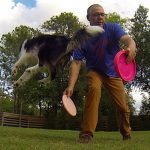 Release has many meanings in disc. Throws and throw variations can be referred to as releases. Sometimes you talk about the dog releasing something, the toy, or the environment, as in to stop... More Diversity and Rhythmic Team subelements. And of course a difficult routine will bleed over into the Canine and other Player and Team elements, it’s a natural response to Awesome, but the Canine and those other Player elements are not designed to judge difficulty or to be impacted by difficulty, and they should not be swayed much, if at all, by the difficulty of the routine.
Release has many meanings in disc. Throws and throw variations can be referred to as releases. Sometimes you talk about the dog releasing something, the toy, or the environment, as in to stop... More Diversity and Rhythmic Team subelements. And of course a difficult routine will bleed over into the Canine and other Player and Team elements, it’s a natural response to Awesome, but the Canine and those other Player elements are not designed to judge difficulty or to be impacted by difficulty, and they should not be swayed much, if at all, by the difficulty of the routine.
Let’s look at some of the Team Elements that are judged by the Head Judge and see how they could be judged in terms of difficulty:
Two Different Overs
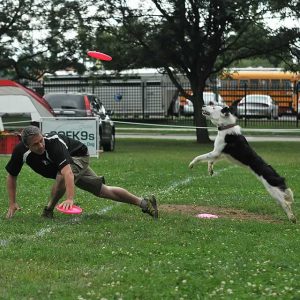
Overs are when the dog leaps over a part of the handler’s body – a leg, a hoop, over the body. The scale of the over is important towards judging difficulty, as is the release. A dog leaping over a standing handler is, most likely, harder than an over while the handler is laying down, or kneeling. A butterfly Over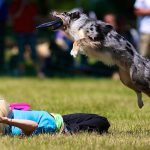 An Over is any leaping catch that happens over top of the handler’s body. Overs are usually named by the part of the body over which the dog flies, i.e - Leg Over,... More is more difficult than a regular backhand toss.
An Over is any leaping catch that happens over top of the handler’s body. Overs are usually named by the part of the body over which the dog flies, i.e - Leg Over,... More is more difficult than a regular backhand toss.
The timing of the throw and the separation between the handler’s hand and the disc when it is caught by the dog also bears heavily on difficulty. A tiny little toss that the dog catches 15cm (6 inches) from the handler’s hand should be less impressive in terms of difficulty than a disc that is caught 75cm (30 inches) from the handler’s hand. Overs that are well thrown are more difficult than near takes.
A blind throw (handler can’t see dog) or a blind catch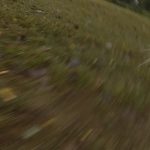 A Blind Toss is a throw that starts with the dog being unable to see the disc, the human unable to see the dog or the target, or the dog and handler unable... More (dog can’t see disc) or limited visibility throws and catches are more difficult.
A Blind Toss is a throw that starts with the dog being unable to see the disc, the human unable to see the dog or the target, or the dog and handler unable... More (dog can’t see disc) or limited visibility throws and catches are more difficult.
Another thing that is important in judging the difficulty of overs, and that impacts every single one of these things is what happened right before it. A Flip to Over, for instance – dog flips and immediately does an over – is most likely more difficult than a simple over that takes place with a dog standing a meter or two away from the handler.
A unique or difficult body position by the handler could impact difficulty as well. Handler or team movement during an over is also an indicator of difficulty.
Two Vaults
Overs and Vaults are very similar skills, and are also very similar in terms of judging their difficulty. The type of release, timing of release and separation between the catch and the handler’s hand, team movement, Flip (or any trick) to Vault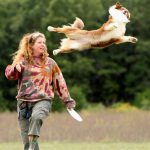 The dog uses the player´s body as a launching pad to jump for a disc. A Vault is a leaping catch from the handler’s body. The dog leaves the ground for the target... More, and unique or difficult positioning or vaulting platform will impact difficulty.
The dog uses the player´s body as a launching pad to jump for a disc. A Vault is a leaping catch from the handler’s body. The dog leaves the ground for the target... More, and unique or difficult positioning or vaulting platform will impact difficulty.
The scale of the vault in terms of height from the ground may or may not add difficulty to a vault, depending on the judge.
Multiple Segment
Release, scale, dogs movement – flipping, side to side, standing on hind legs, all of these things should be factored in when assessing difficulty of the multiple. Also there’s the speed of the multiple that should be taken into effect.
Dog Catch
Similar to Vaults and Overs…
Team Movement
Unique or interesting team movement can have a positive effect on difficulty. Tight flow and unique starting and set up moves and position often makes the sum of a sequence greater than it’s parts in terms of difficulty.
Passing Segments
The dog running past the handler, closely, in linear fashion to catch a disc is a passing maneuver. The Passing maneuver is a stand alone scoring element in the USDDN Team category. Longer throws may or may not be easier than shorter ones, and 7-12 yard throws can be quite difficult to execute for the dog due to speed regulation problems.
Passes can also be similar to overs, just not over the body. Instead the “over” happens next to the handler.
Directional Distance Movement
These are typically Zig Zags, Crossing patterns and Around the World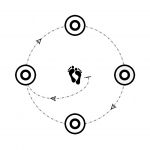 An Around the World is a disc dog flatwork pattern consisting of 4 catches in a circular pattern around the handler. This pattern is typically larger than 5 yards and often features creative... More type moves. Their difficulty is primarily judged by the releases thrown and the intent of the handler. Is the handler just chucking discs out there? Or is the handler putting discs in a spot
An Around the World is a disc dog flatwork pattern consisting of 4 catches in a circular pattern around the handler. This pattern is typically larger than 5 yards and often features creative... More type moves. Their difficulty is primarily judged by the releases thrown and the intent of the handler. Is the handler just chucking discs out there? Or is the handler putting discs in a spot Spot is a “go to a place”, or “go to a mat” behavior. This means that the dog seeks out and performs a duration behavior on a spot of the handler’s choosing. A... More to enhance the pattern or to punctuate the pattern with a big leap?
Spot is a “go to a place”, or “go to a mat” behavior. This means that the dog seeks out and performs a duration behavior on a spot of the handler’s choosing. A... More to enhance the pattern or to punctuate the pattern with a big leap?
Wrapping it Up
There is no real formula for difficulty in Dog Frisbee, but many of the general principles have all been outlined above. No two judges will see things exactly the same in terms of difficulty. What some people find difficult, others see as easy. That’s the way subjective judging goes.
I hope this helps, Mila, and I hope some other people chime in on this important and interesting topic. Comments are right below…
I will forward your questions to the USDDN Steering Committee in hopes that someone else might add their thoughts to this conversation.
